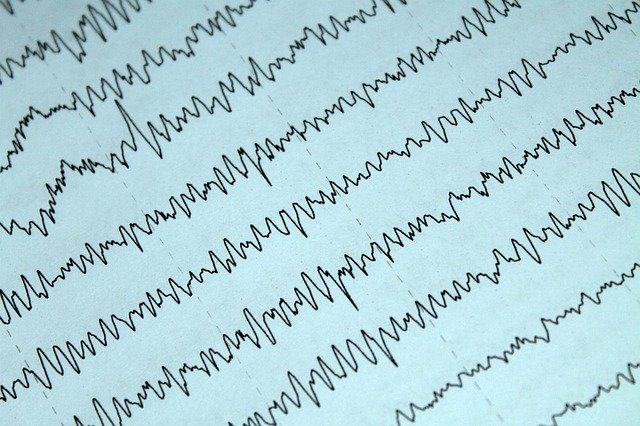Mental health tech advancements are assisting patients with diagnosis, mood tracking, symptom management, and many other things.
Today, mental health tech is having a moment.
Hundreds of millions of individuals worldwide cope with mental health concerns. The World Health Organization estimates that 300 million people suffer from depression and another 260 million suffer from anxiety disorders.
There have been few breakthroughs in mental health pharmaceuticals in nearly three decades. However, mental health tech is doing a great deal to help sufferers. Here’s a small sample of recent developments.
1. We have apps for nearly every mental health issue.
Some apps are meant to help people with certain diseases. These include anxiety, schizophrenia, or depression. They manage their symptoms, track their moods and thoughts, and help them stick to their therapies.
Others try to improve memory, coping, and reasoning abilities. In addition, they deal with stress management through meditation or mindfulness.
Apps for post-traumatic stress disorder (PTSD), eating disorders, and addiction are also available. Convenience, confidentiality, and a low price are just a few of the advantages of mental health apps.
Preliminary research has suggested that apps enhance patient outcomes. Make sure you consult a doctor or therapist about any app you’re considering. Focus on those that use evidence-based treatments like cognitive behavior therapy.
Before you download an app, double-check the developer’s credentials. According to the American Psychological Association, the most trustworthy apps are associated with research organizations or government entities. Choose one with an easy-to-use interface. You’ll be more likely to stay with it…and you’ll get better results.
2. Mental health tech is available in the form of video or text therapy.
There’s a dearth of mental health specialists in the United States.
Internet or mobile therapy appears to be a viable option for many people unable to access one in their location. It’s also promising for individuals who don’t have the time or finances to go to an appointment in person. It also helps people who fear judgment.
This technology allows users to connect with counselors via video calling. They do so on a computer or phone using several services or platforms. Some therapy is in the form of text. This allows the patient to send limitless messages via their phones. They are able to do this 24 hours a day, seven days a week for a single monthly charge.
3. Technology can track behavior indicators of an imminent mental health crisis.
Some mental health apps are intended to provide results (such as a better mood or reduced worry). However, researchers are also aiming to use mobile technology to detect suicidal thoughts. In addition, they help detect developing manic periods, or depressive episodes before they appear.
For example, suppose a person starts typing faster than usual. Then, their syntax changes. After that maybe they go on impulsive buying sprees. This could be a sign of manic behavior. They may be in the throes of depression if they don’t answer SMS from family and friends.
This data collecting could result in what Insel refers to as a “digital phenotype,” which is a tailored mental health map. This helps users or their loved ones to avoid possible trouble by providing early intervention.
This line of study is promising. However, it’s still uncertain whether the method would have long-term results for patients. It’s also still unclear if the technology is fine-tuned enough to adequately detect behavioral changes.
4. Smart technology software can search medical records for at-risk patients.
Some insurance firms are now taking advantage of cloud-based software platforms.
These platforms analyze electronic medical records and insurance claims data. This helps them identify individuals who are at risk of acquiring mental health problems such as depression.
After that, through a network of mental health specialists, they connect patients with appropriate therapy.
5. Treatments are being enhanced via virtual reality.
Some doctors use a procedure called exposure therapy. This allows patients to revisit trauma-related phenomena in a safe environment. They perform this in perhaps a doctor’s office, in addition to medicine, therapy, and exercise. This allows patients to become accustomed to the recollections. This reduces flashbacks and anxiety.
Accordingly, therapists now use virtual reality technology as an exposure therapy tool in clinical trials.
A small number of physicians in the United States have been trained to utilize it in their clinics. Headsets use a combination of pictures and sound to transport patients back in time. Subjects discuss previous experiences with therapists while wearing the headsets. They do this to desensitize the patient to the stimuli in front of them.
Meanwhile, researchers are using the technology of online games and virtual reality to better understand the sense of social rejection in BPD sufferers. A borderline personality disorder is a complex condition in which sufferers have trouble regulating emotions. In addition, they have a distorted sense of self. They are also prone to extreme mood swings, particularly toward people in their lives.
6. Google screening can help detect depression.
Google recently partnered with NAMI, a national grassroots mental health advocacy organization. They now offer the technology of a mental health screening questionnaire to U.S. residents who search for “depression” on their mobile phones.
The first result is a “knowledge panel” box, which contains information on depression, its symptoms, and possible remedies. There’s also an option to “Check if you’re clinically depressed.” They then fill out a confidential, medically supported self-assessment quiz.
Source: https://techreport.com/growth/3475484/mental-health-tech/









